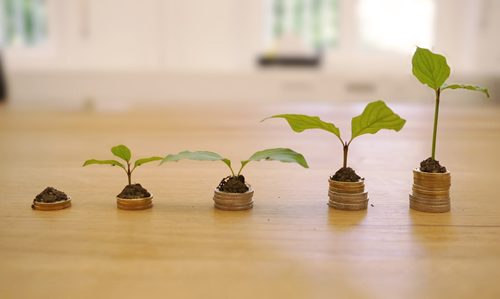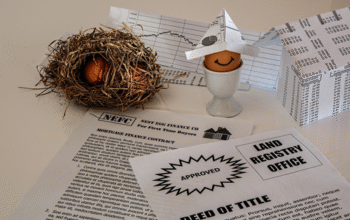Zero Interest, Full Trap? What 0% APR Credit Cards Really Cost You
Credit card companies love to shout about their “0% APR for 12 months!” or even “No interest for 18 months!” deals. They catch your eye like a shiny lure, promising a debt-free paradise if you just swipe now and pay later without any extra cost. Sounds like a dream, right?
But as with most things that sound too good to be true, there’s more lurking beneath the surface of these 0% APR credit card offers. The question is: Are these interest-free promotions really the financial windfall they appear to be, or are they a cleverly disguised trap that ends up costing you more than you bargained for?
In this blog, we’ll dig into the hidden costs and risks behind 0% APR credit cards so you can make smarter decisions — and avoid falling into debt traps that wipe out your savings.
What Does 0% APR Really Mean?
APR stands for Annual Percentage Rate — basically, the interest rate you pay annually on your credit card balance. When a card advertises 0% APR for an introductory period (usually 6 to 18 months), it means you won’t be charged interest on your purchases or balance transfers during that time.
This sounds fantastic. After all, who wouldn’t want to borrow money interest-free for a whole year or more?
But there’s a catch:
- The 0% APR is temporary.
- After the promotional period ends, the APR jumps to a high regular rate — often 15%, 20%, or even higher.
- If you don’t pay off your balance in full before the introductory period expires, you get hit with retroactive interest on the remaining balance.
- Late payments or missed payments can void the 0% APR, and the card issuer may apply the regular APR immediately.
The Hidden Costs You Might Overlook
1. Balance Transfer Fees
Many 0% APR offers apply to balance transfers, allowing you to move debt from a high-interest card to a new card with 0% APR. But balance transfers almost always come with fees — typically 3% to 5% of the amount transferred.
For example, if you transfer $5,000 to a new 0% APR card with a 3% fee, you pay $150 upfront just to move your debt. That fee can quickly erase the benefits of the interest-free period if you’re not careful.
2. Annual Fees and Other Charges
Some 0% APR credit cards come with annual fees, sometimes upwards of $95 or more. While many cards waive this fee the first year, it can be a costly surprise in year two — especially if you plan to keep the card long-term.
Additionally, fees for foreign transactions, cash advances, and late payments can pile up and add to your cost of borrowing.
3. High Post-Promo APR
The most significant danger is the regular APR after the promo ends. It’s often very high — 18% to 25% or more — and applies to any remaining balance.
If you don’t pay off your balance in full before the promo expires, you’ll start accruing interest daily, and your monthly payments could balloon quickly.
Behavioral Traps: Why 0% APR Can Lead to More Debt
Even if you understand the fees, 0% APR cards can still lead to bad habits and bigger debt burdens. Here’s why:
1. False Sense of Security
When you see “0% interest,” it feels like free money. You might spend more than you can afford, thinking you can pay it off before the promo ends. This mindset can lead to overspending and missed payments.
2. Deferred Payments Are Still Payments
No interest doesn’t mean no payments. You still need to make at least minimum payments each month on the balance, or you risk losing the promo rate and incurring penalty APRs.
Minimum payments are usually small, but if you only pay the minimum, you’ll end up with a big balance when the 0% period ends.
3. Debt Stacking
Some consumers use multiple 0% APR cards to juggle debt, transferring balances from card to card. While this can provide short-term relief, it often leads to a cycle of borrowing that’s hard to escape.
What Happens When the 0% APR Ends?
The end of the 0% APR period can be a rude awakening. Suddenly, your credit card balance is subject to high interest, and if you’ve been carrying a balance for a long time, the interest charges can snowball.
If you haven’t planned ahead to pay off the balance, you might find yourself:
- Paying hundreds or thousands more in interest.
- Struggling to make higher monthly payments.
- Seeing your credit score drop because of high credit utilization or missed payments.
- Feeling trapped in a cycle of debt that’s hard to break.
How to Use 0% APR Credit Cards Wisely
Despite the risks, 0% APR credit cards can be powerful financial tools if used correctly. Here are some smart strategies:
1. Create a Payoff Plan
Before you open a 0% APR card, calculate how much you need to pay each month to clear your balance before the promo ends. Use a calculator or spreadsheet to break down payments by month.
Stick to this plan religiously.
2. Avoid New Purchases
Try to limit using the card for new purchases during the 0% APR period, especially if it only applies to balance transfers. Some cards apply the promo only to existing balances, so new purchases may start accruing interest immediately.
3. Watch Your Spending
Avoid overspending just because you have “free” credit. Remember, you must pay it back eventually, and the interest will kick in if you miss deadlines.
4. Avoid Late Payments
Always pay at least the minimum on time. Late payments can void your 0% APR deal and trigger penalty interest rates.
5. Don’t Transfer Balances Multiple Times
Balance transfers come with fees and can hurt your credit score if done repeatedly. Use them strategically, not as a long-term debt juggling tool.
When Should You Consider a 0% APR Credit Card?
If you’re currently carrying credit card debt at a high interest rate, a 0% APR balance transfer card can save you hundreds or thousands in interest — but only if you:
- Have a solid plan to pay off the balance before the promo ends.
- Understand and budget for transfer fees.
- Can make payments on time without fail.
If you’re planning a large purchase and want to spread payments interest-free, these cards can also be useful — as long as you avoid the temptation to carry a balance beyond the promo.
Alternatives to 0% APR Credit Cards
If you’re wary of the pitfalls, here are some safer alternatives:
1. Personal Loans
Personal loans often have fixed interest rates and terms, which means predictable monthly payments. They don’t come with the same traps as credit cards.
2. Credit Counseling or Debt Management Plans
If you’re struggling with debt, non-profit credit counselors can negotiate with creditors to reduce interest rates and fees.
3. Build Emergency Savings
Having a cash buffer means less need to rely on credit cards for unexpected expenses.
Final Thoughts: The Real Cost of “Free” Credit
0% APR credit cards are not evil — but they’re not free money either. If used responsibly, they can be a useful financial tool to save on interest and manage debt.
However, many consumers fall into the trap of overspending, missing payments, and getting hit with surprise fees and high interest after the promo ends.
The key is to understand the full cost — including fees, behavior risks, and what happens when the promo expires. With that knowledge, you can decide if a 0% APR card fits your financial situation, or if it’s a risky trap to avoid.
If you want to talk through your options or need help creating a plan to get out of credit card debt, feel free to ask! Financial decisions are complex, but with the right information, you can always take control.



